 Domestic Duck Breeds Domestic Duck Breeds |
 Majestic Farewell... Majestic Farewell... |
 Outside Farewells... Outside Farewells... |
 Majestic Adoptions! Majestic Adoptions! |
 Majestic Sponsorships! Majestic Sponsorships! |
 Majestic T-Shirts Majestic T-Shirts |
 Majestic Gift Shop Majestic Gift Shop |

To Make a
Donation, please click here: Donation
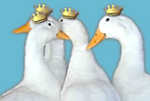
Please Help Today!
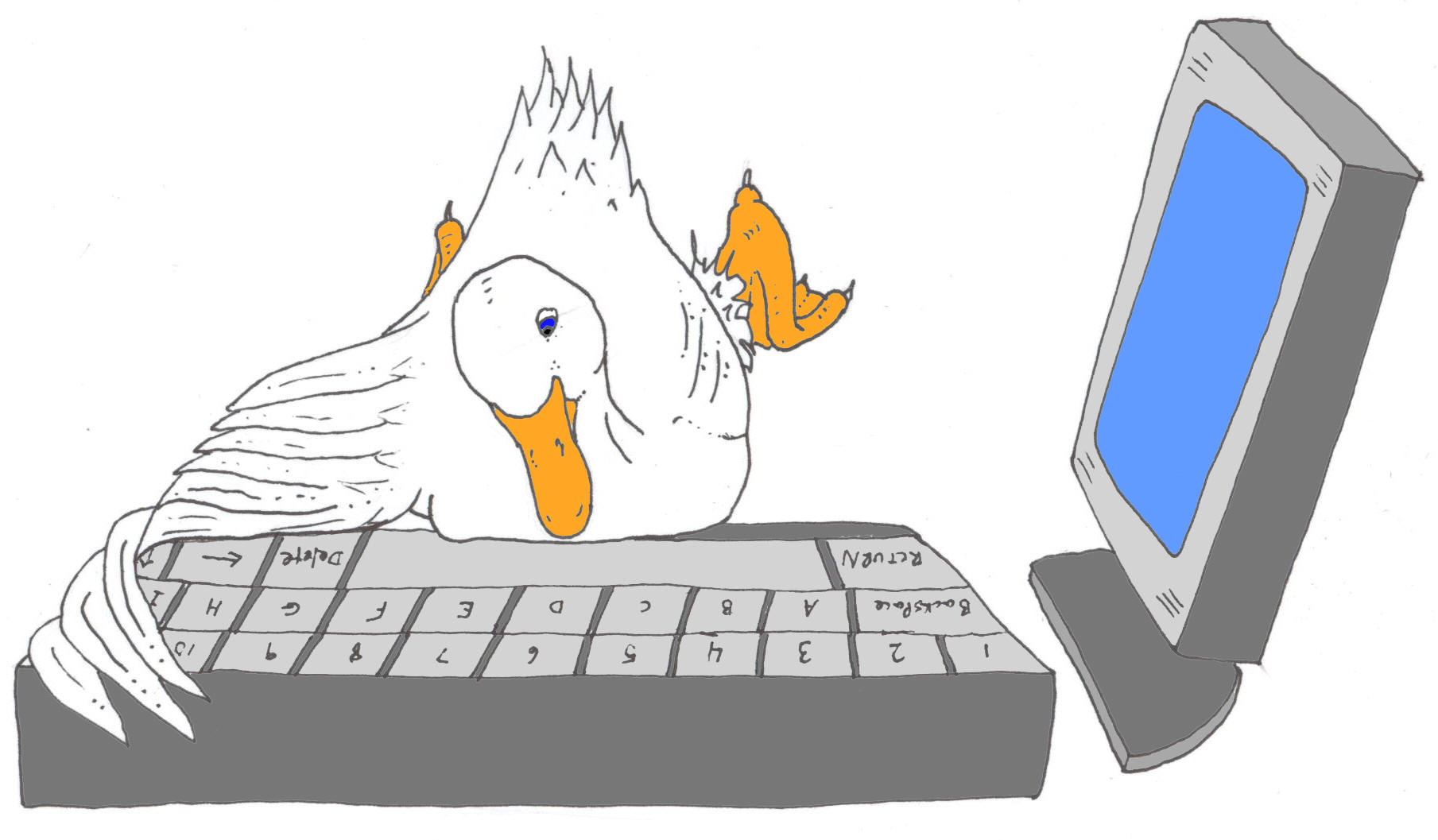
Visit Majestic on Facebook
For lots of
photos and updates as they happen! This is where you can see and
hear all the latest news FIRST!
And visit us on Instagram too: @majestic_waterfowl_sanctuary
Majestic Farewell...
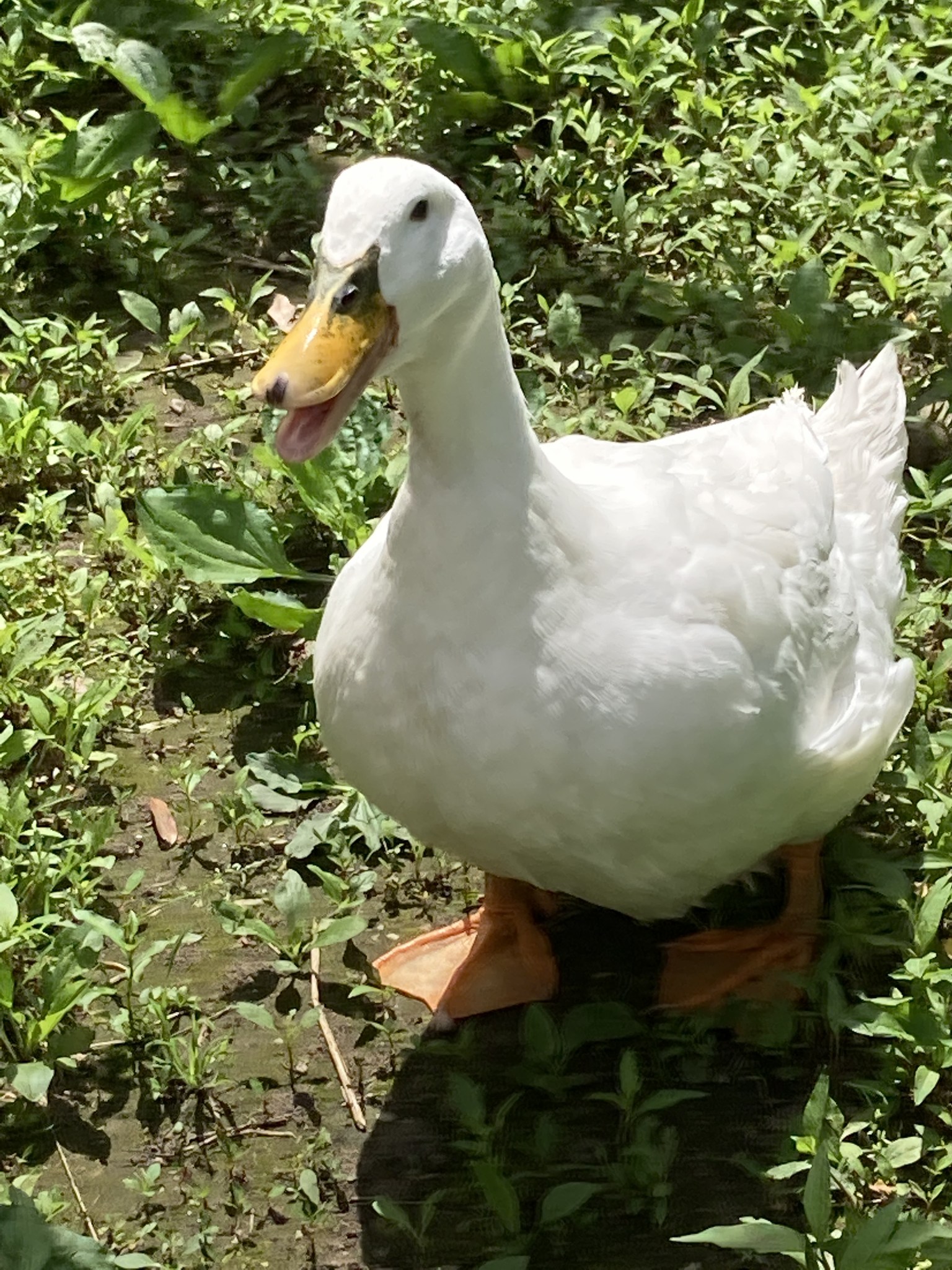
Airline Ellie... From the Airline Trail all the way into our hearts... We know who was waiting for you: Ah-hamed Ibn Fahalan Ibn Alabas Ibn Rasheed Ibn Hamad... XXOO
Majestic Outside Farewells...
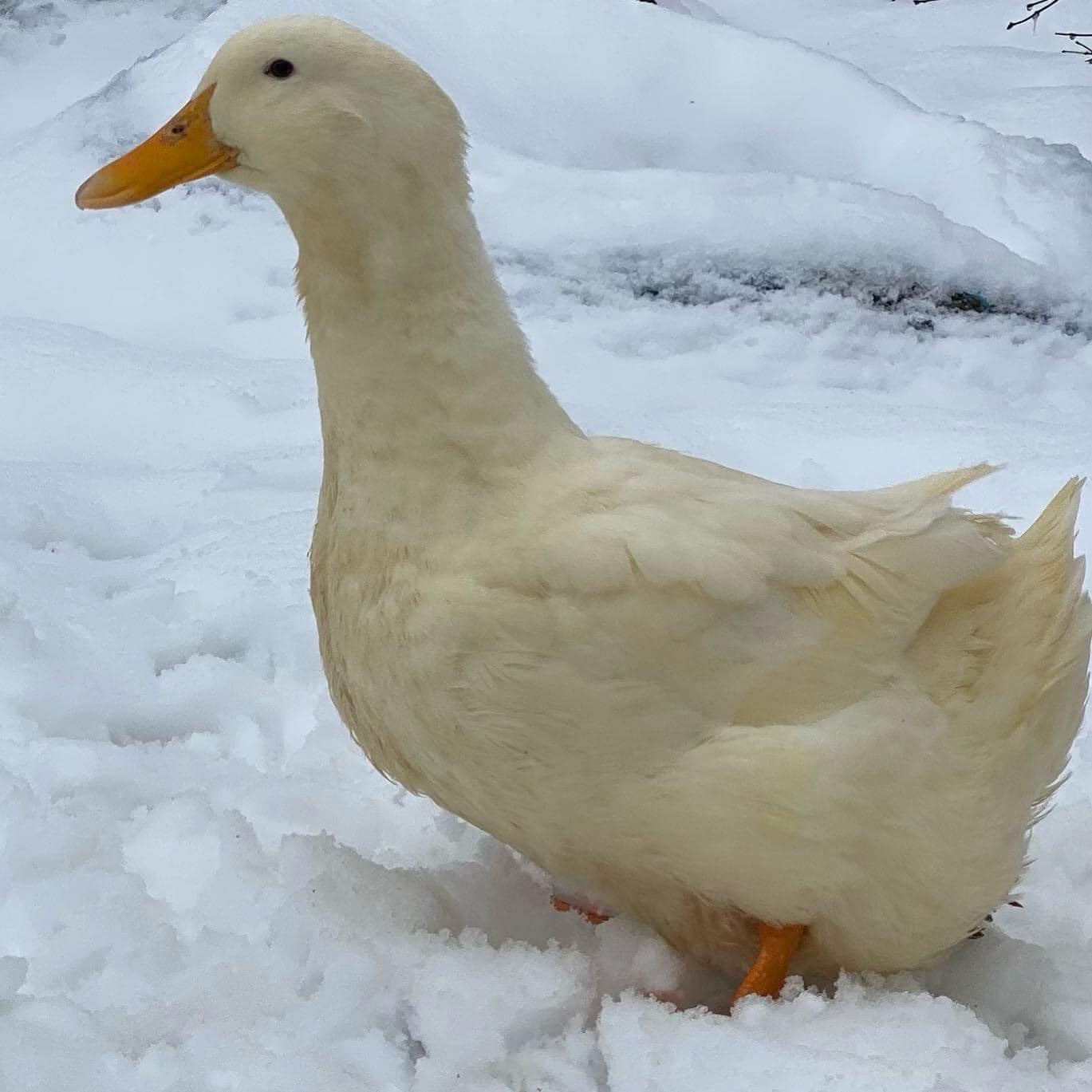
Lucy Loo... You were a sparkly blessing from the moment we met you and a brought so much joy to your loving family... Rest in peace...
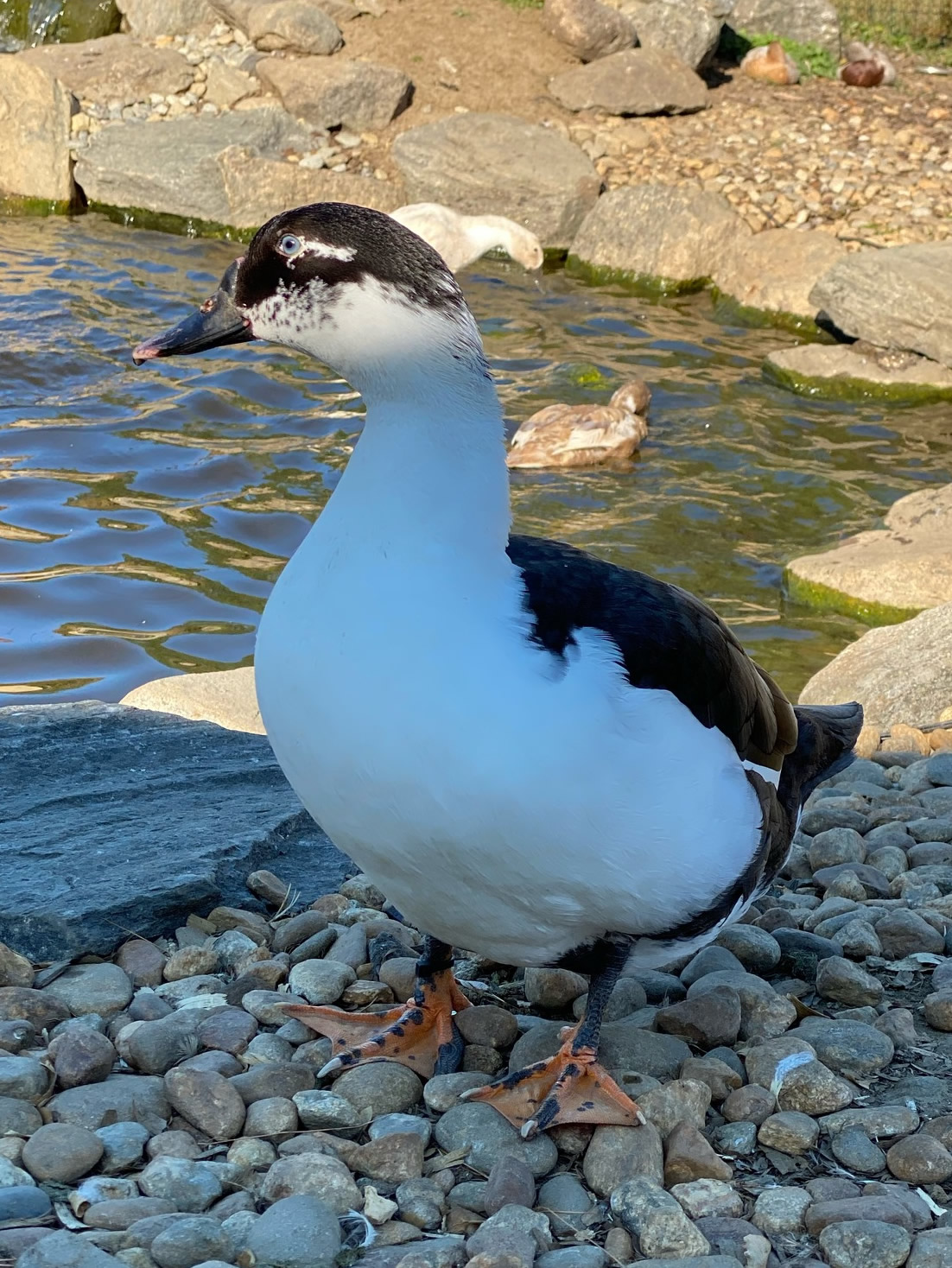
Mercury... King of kings, beautiful boy... All who met you fell in love with you and this led you into the most beautiful and loving home (with so many ladies!)... When we think of you we still sing Queen songs in your honor...
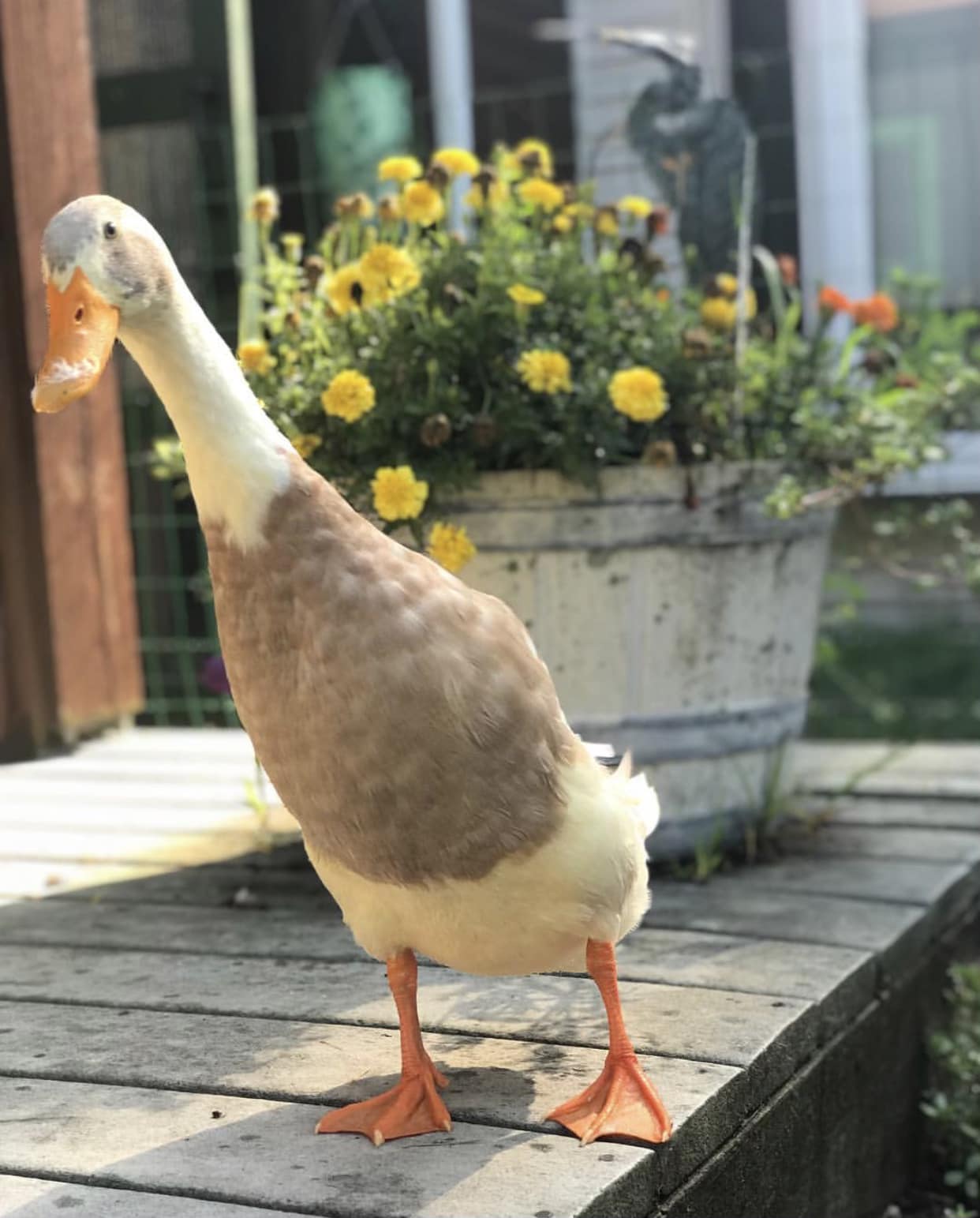
Oh, Dean... The whole world fell silent for you, Looloo... You touched so many hearts and so many lives. Bless you for making the world a better place... @dean_crowley_marv_duck
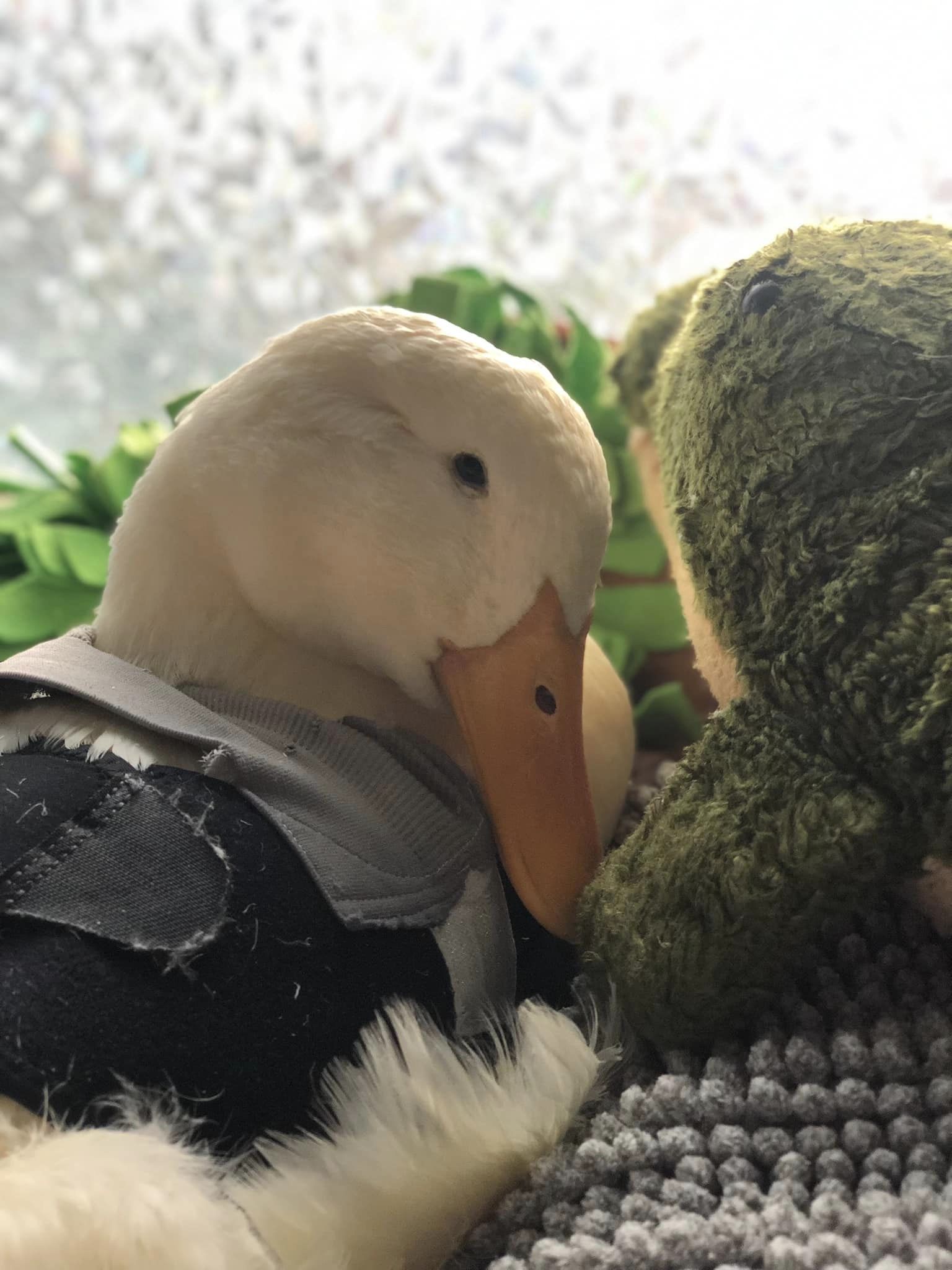
Olive... You were so special and so blessed to end up in the arms of the most amazing family (with Odin as your brother)... You knew you were loved and this love journeys with you...
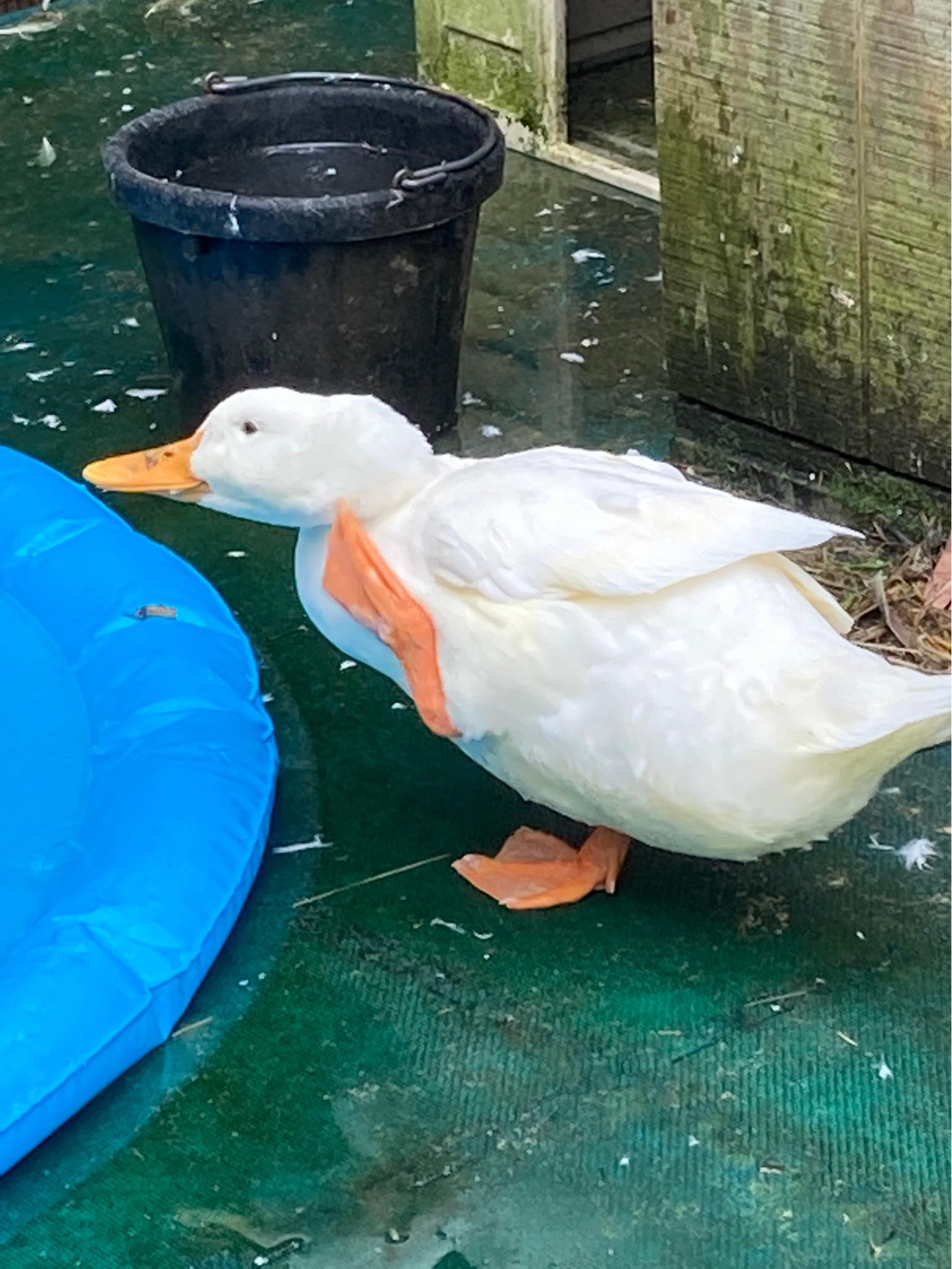
Valkyrie... Too soon... Too soon... We thought your healed toe would carry you through a long life... We were devastated to hear of your unpreventable drift into the heavens... You will be remembered forever...
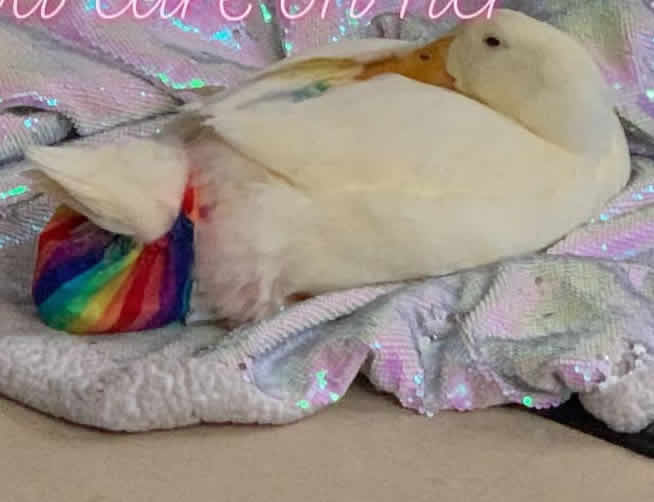
Oh, Edna... not you too... You were the bringer of joy to so many, especially the children... XXOO
Majestic Adoption!

Phillip! We love a good foster fail!
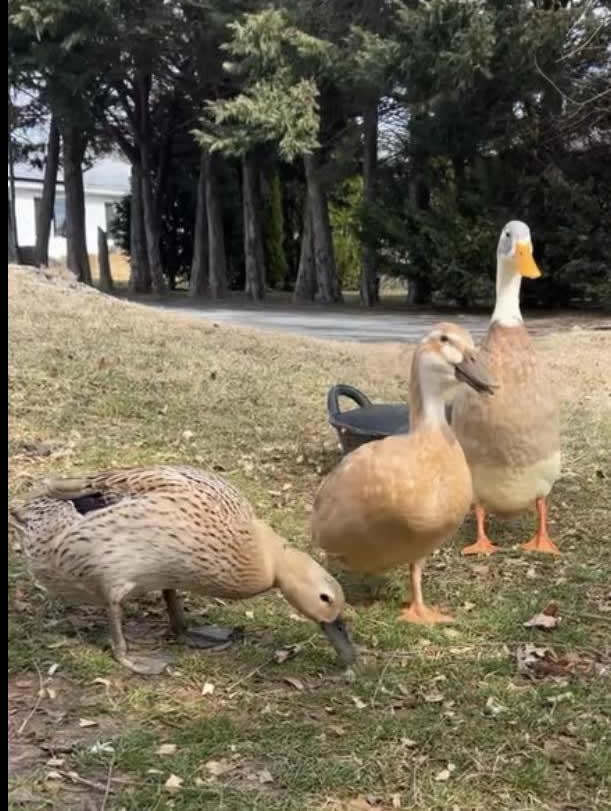
Willow + Amber + BamBam = Wambam!!!
Majestic Direct Placement!
???
Majestic Sponsorships!
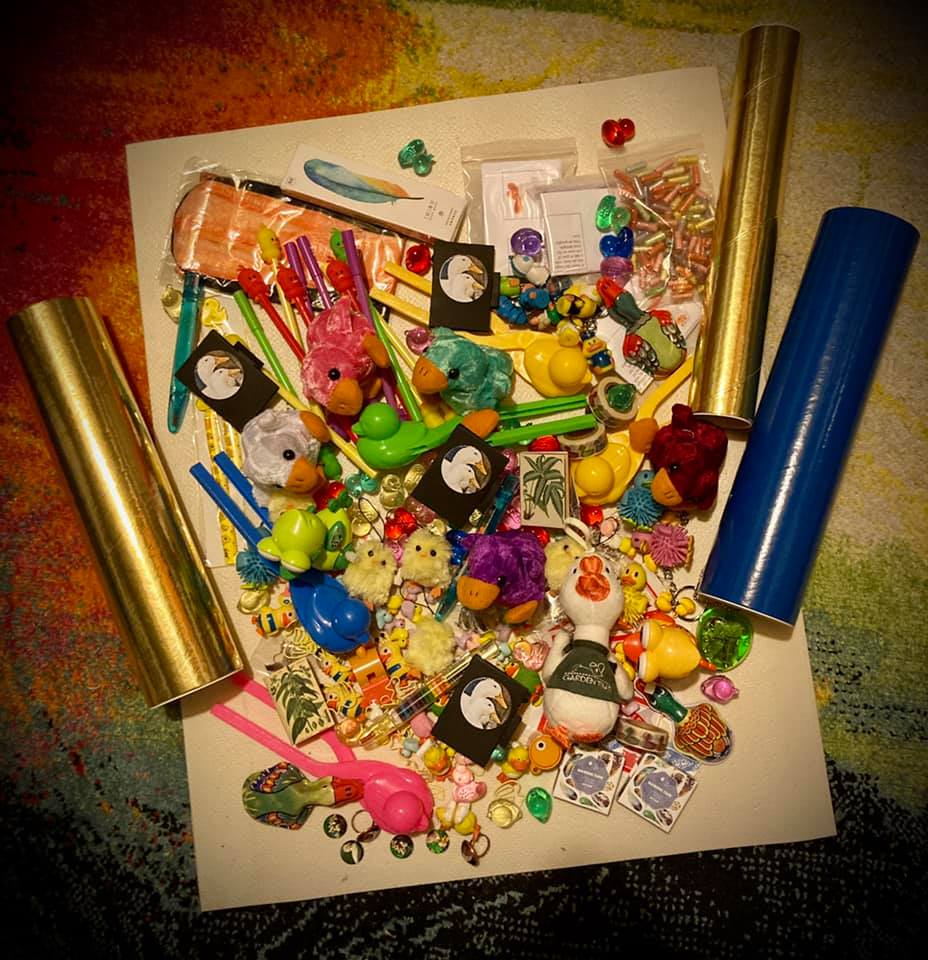
For more information click here: Majestic Sponsorships!
Majestic T-Shirts

Our Waterfowl Memorial T-shirts and our classic Muckin' Fun for Everyone t-shirts are being sold, printed and shipped by LOEA with a nice chunk of the proceeds being donated to our sanctuary. Thank you so much for all of your help and services, Jenn!
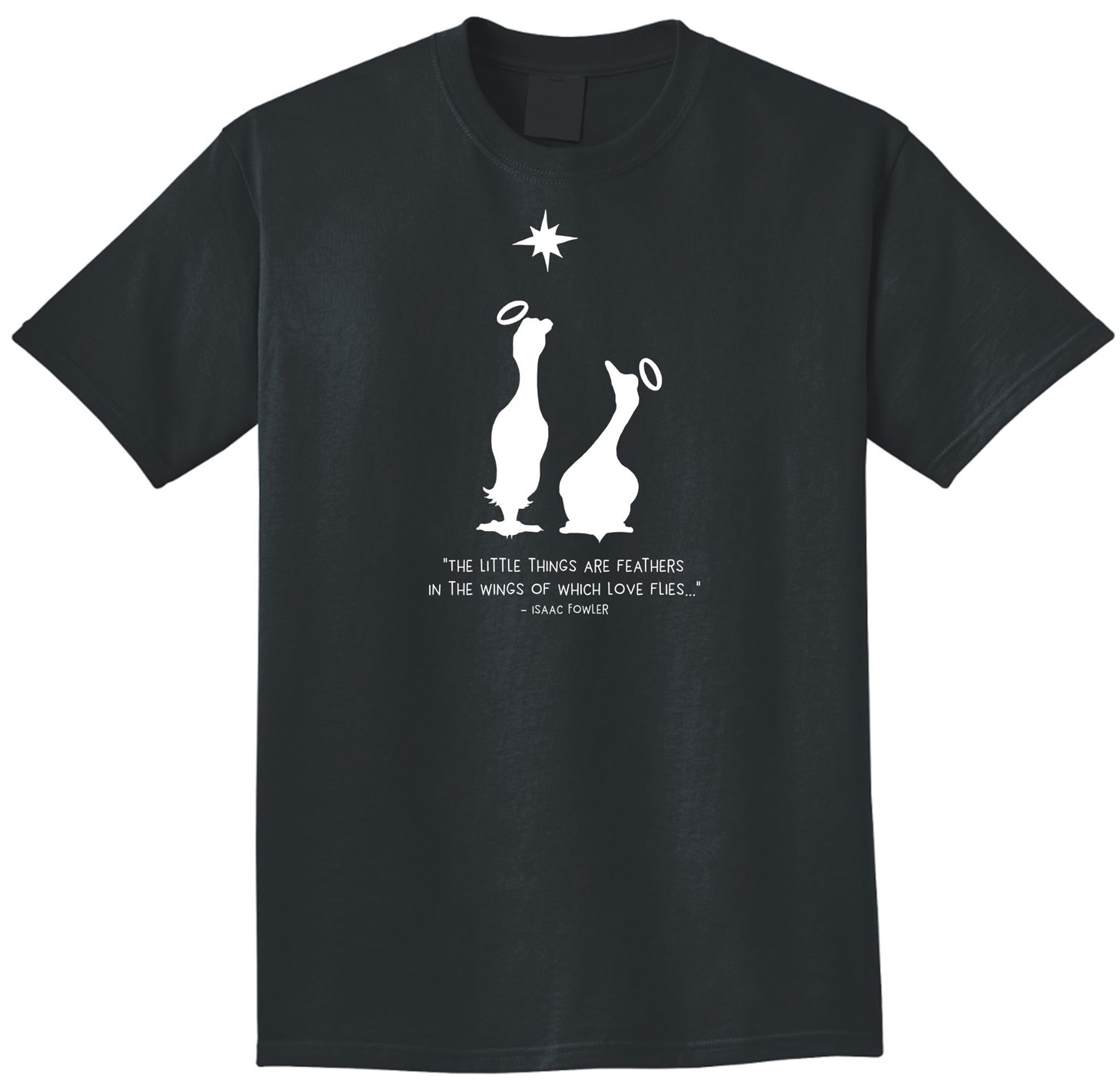
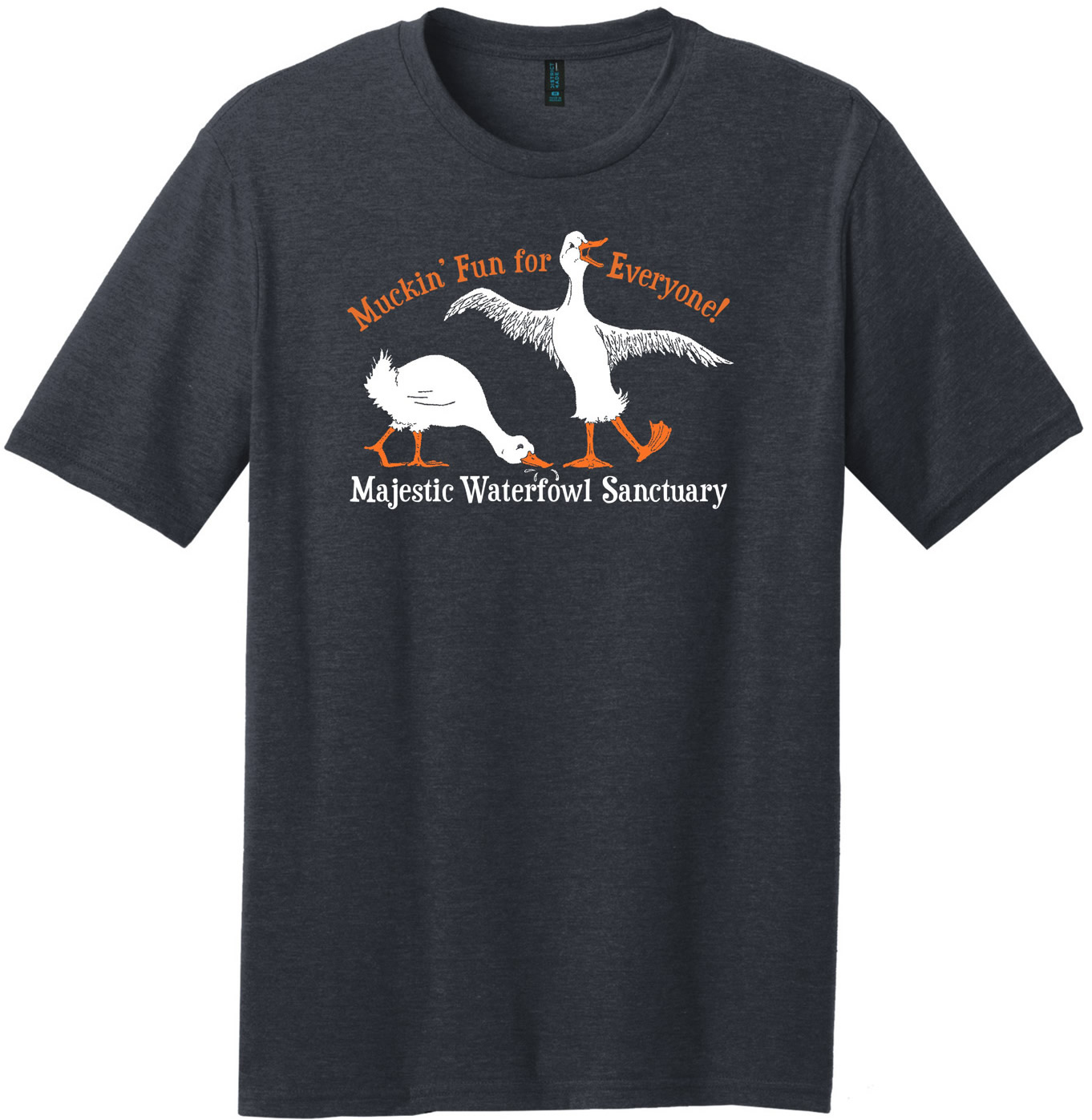
Majestic
Gift Shop
Visit our Majestic Gift Shop for some fun Majestic items! Proceeds from the
shop benefit our sanctuary!
Lullaby Friends Mug:
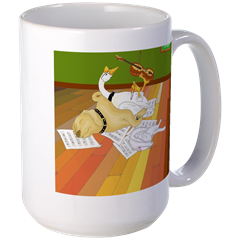
Contact Us
Majestic Waterfowl
Sanctuary
17 Barker Road
Lebanon, CT 06249
directorATmajesticwaterfowl.org
Our Newsletter
The Majestic Monthly is published 12 times per year.
Previous issues are available in our
Archives.
|
Domestic Duck Breeds
We've compiled this quick reference list for t hose of you who are out there watching your local ponds and waterways for abandoned ducks, but aren't quite sure how to tell a domestic duck from a wild duck. This list is not comprehensive, but includes the most commonly abandoned breeds.
WILD MALLARD DUCKS
It's important to know what the common wild Mallard looks like in order to be able to spot other ducks who are out of place and do not belong in the wild.


Removing Mallard ducks, ducklings or eggs from the wild is illegal in accordance with the Migratory Bird Treaty Act. You must be a certified wildlife rehabber or directly transporting them to a wildlife rehabber--otherwise, hands off!
Male and female Mallard ducks Mallards usually weigh between 2-3 pounds and are sexually dimorphic. Males have white undercarriages, auburn breasts, white rings around their throats and green iridescent heads while females are speckled with light and dark browns. Males eclipse molt (temporarily taking on female coloration).
Males have olive bills while females have orange bills. The feet of males and females are orange although they may have brown or charcoal highlights.
CRESTED DUCKS
If you see a crested duck of any kind, it is either domestic or is a domestic hybrid (occasionally a Mallard might mate with an abandoned crested duck and you may see a crested Mallard, but this is pretty rare).
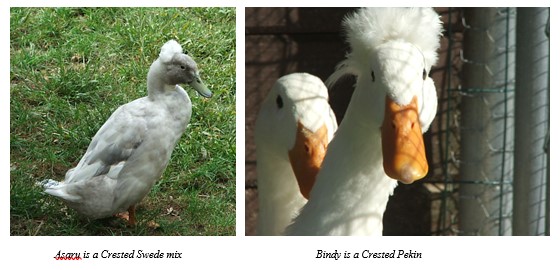
 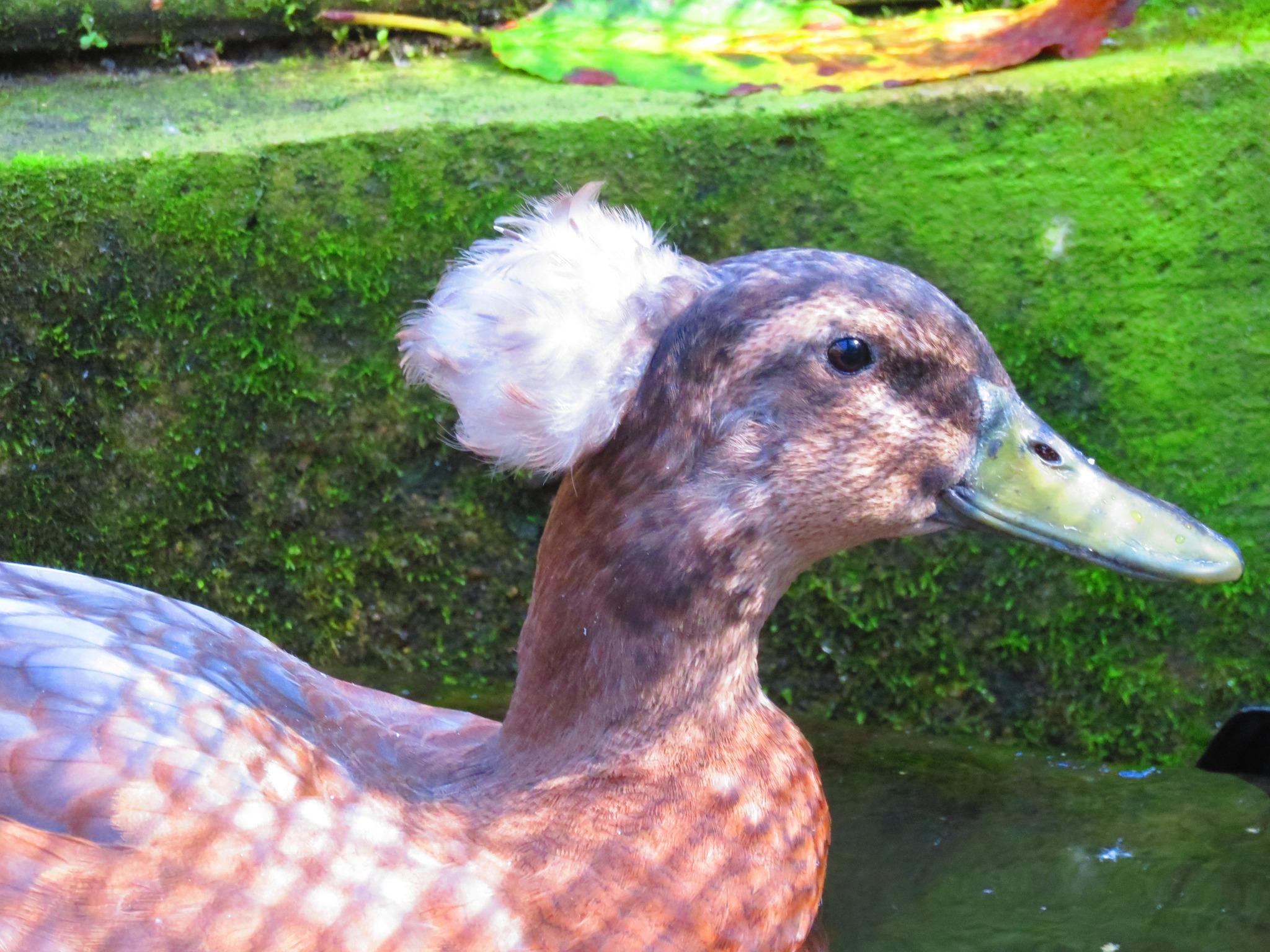
Boomer is a Crested Khaki/Rouen mix (Left: Standard feathering & Right: Eclipse molt)
SIZE MATTERS
Wild Mallards are pretty small and tend to only weigh about 2-3 pounds at most, so if you're seeing a duck who is larger than this, you are probably looking at a domestid duck (or possibly a wild/domestic hybrid). When ducks are heavier than this, they usually cannot fly (except for Muscovy ducks) to escape predators and are usually left behind when it comes time to migrate. So, if you're seeing a duck who is bigger than their flying wild counterparts, that's a good indication that they might not belong there.
DOMESTIC BANTAM BREEDS (1-2 lbs.)
Bantam breeds aren't often abandoned, but because they can fly, they do occasionally escape and often embed themselves within flocks of wild Mallards. Although they may seem like they can survive, they do not have migration instincts and can succumb to starvation and the elements in winter. It's also important to remove them from the wild whenever possible to prevent cross-breeding.

Call ducks only weigh about 1–1.5 pounds and are plumed in an exceptionally wide variety of colors including: Apricot, Bibbed, Black, Blue, Buff, Chocolate, Fawn, Grey, Lavender, Magpie, Pied, Saxony, Silver and White. Males of some color varieties (i.e. Apricot, Grey, Fawn and Silver) eclipse molt (temporarily taking on female coloration).
Bills can range in color from charcoal, brown, olive or orange. Legs and feet can be any mixture of charcoal, brown, olive or orange.
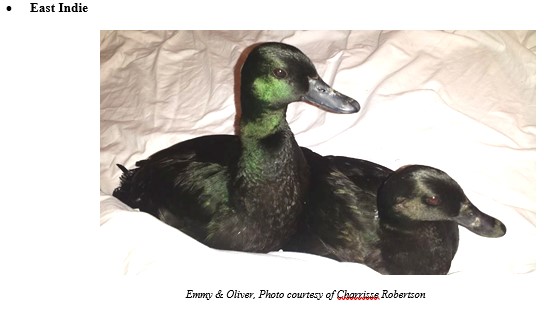
East Indie ducks look like small Cayuga ducks (of the middleweight class). They weigh 1.5 pounds. Males and females appear generally the same; both have black feathers with an iridescent green sheen to them.
Bills are usually charcoal, but they can sometimes be olive or have olive in them. Legs and feet are commonly charcoal although they can have orange or olive mixed into their palette as well.
DOMESTIC LIGHTWEIGHT BREEDS (3-5 lbs.)
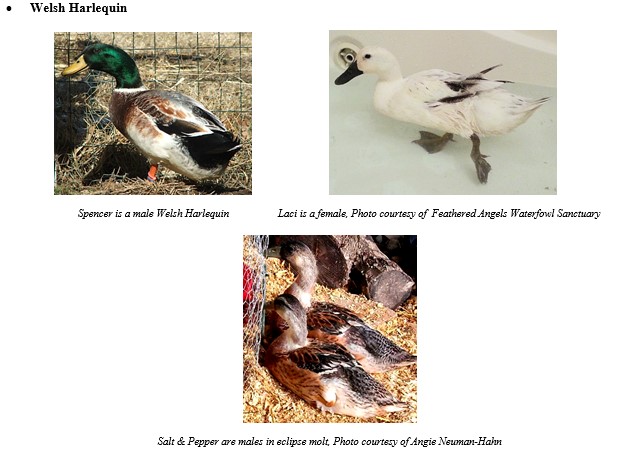
Welsh Harlequin ducks are sexually dimorphic with males appearing very similar to Mallards except they’re a bit larger in size (weighing 5-5.5 pounds) and they have more white dappled into their feathers. Males eclipse molt (temporarily taking on female coloration). Females are mostly white with dark markings on their wing and tail feathers.
Bills are usually charcoal in females and olive in males. Legs and feet are orange in males and charcoal in females.
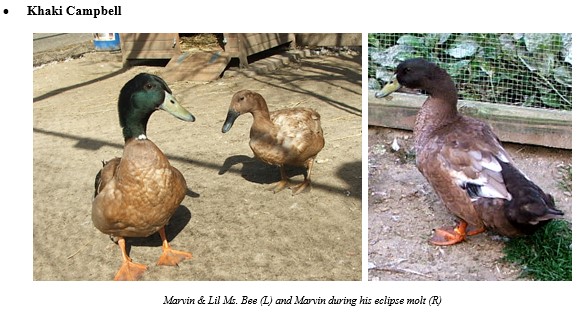
Khaki Campbell ducks weight about 4-4.5 pounds and have brown feathers. Males and females are sexually dimorphic. Males have darker heads and wing feathers than females. Males eclipse molt (temporarily taking on female coloration).
The bills of both males and females can range from charcoal, olive, brown or orange. Legs and feet can be orange or brown or a happy mixture of both.
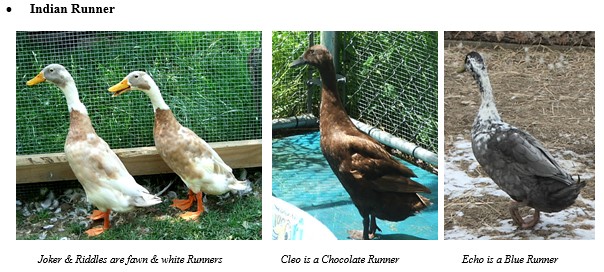
Indian Runners normally weigh between 3-5.5 pounds. They stand upright like bowling pins and are plumed in a wide variety of colors. The most recognized varieties of Runner ducks are: Black, Blue, Buff, Chocolate, Fawn, Fawn & White, Grey, Trout, Silver and White. Males of some color varieties (i.e. Grey, Trout, Fawn and Silver) eclipse molt (temporarily taking on female coloration).
Bills can range in color from charcoal, brown, olive or orange. Legs and feet can be any mixture of charcoal, brown, olive or orange.
DOMESTIC MEDIUM WEIGHT BREEDS (5-8 lbs.)
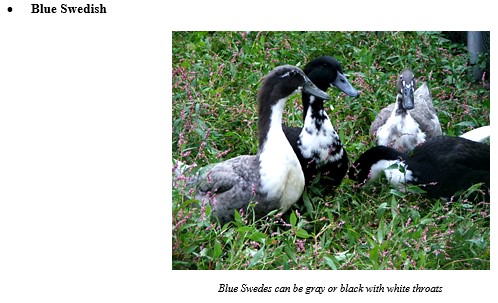
Blue Swedish or “Swede” ducks usually weigh between 6-8 pounds. They can be gray or black with a splotch of white over their throats. Their color depends on the combined genes of their parents and a single set of mating adults can produce both colors of ducklings along with a percentage of whom are silvery white, in which case you’ll see a bit of gray on their heads and wing tips. Males and females appear generally the same.
Bills are usually charcoal although you may see olive highlights. Legs and feet are usually charcoal, although you may see some orange peeking through.
 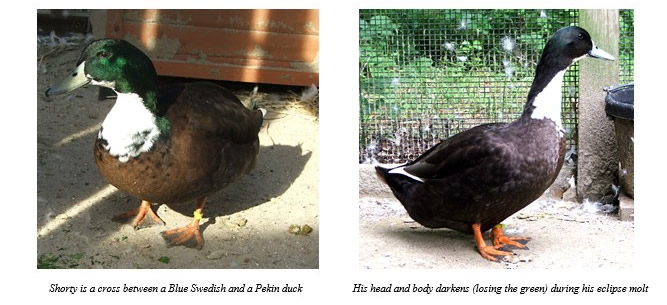
Blue Swede and Pekin ducks are both very popular breeds and are frequently crossbred and sold in grain stores. A duckling resulting from this fusion is often marked in an array of colors and commonly referred to as a Blue Swede Mix.
Blue Swede Mixes can have any combination of brown, white, gray or black feathers (often with a green sheen). Males and females appear generally the same. Depending on their genetics, some males sometimes eclipse molt (temporarily taking on female coloration).
Bills can be charcoal, olive or orange (if orange they may have brown or charcoal markings). Legs and feet can be charcoal or orange—some are even spotted!
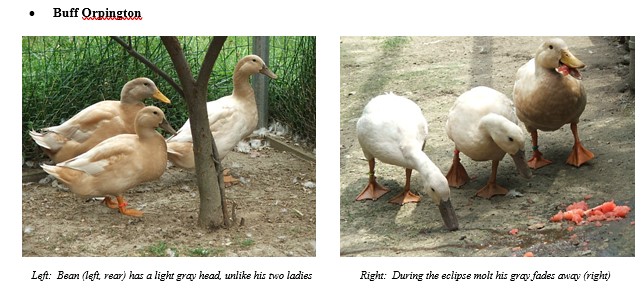
Buff Orpington ducks usually weigh between 6-8 pound (but we've rescued many in the 4-5 pound range). They have beautiful beige feathers. Males have light-gray heads and eclipse molt.
They can have brown or orange bills. Legs and feet are orange.
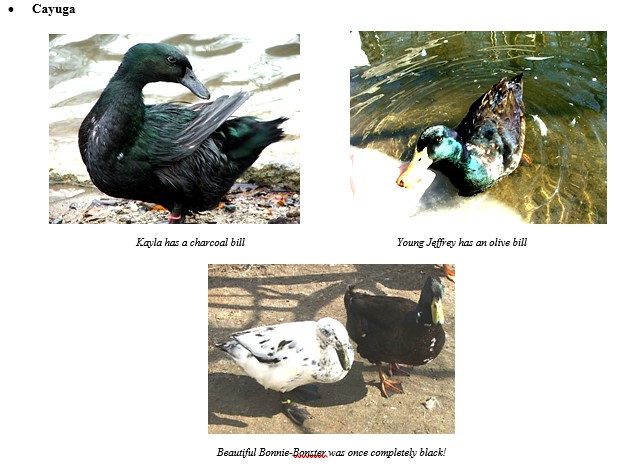
Cayuga ducks tend to weight between 6-8 pounds. They have black feathers with a green iridescent sheen that transforms in summer to include brilliant blues, maroons and purples. As Cayuga ducks age, some of them will turn more-and-more white every year during their annual molt. Males and females appear generally the same.
Bills range from olive to charcoal. Legs and feet are usually black or black and orange.
DOMESTIC HEAVY WEIGHT BREEDS (8-15 lbs.)
 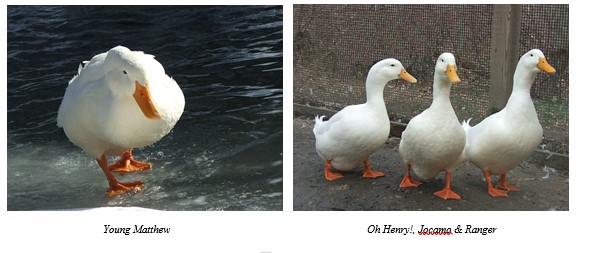
Pekin ducks are the most common breed available and are sadly, the most common ducks you'll find abandoned. Jumbo Pekin ducks have been bred to be too large for their own wellbeing (9-11 pounds as opposed to 6-8 pounds of normal Pekins).
Feathers are white and bills and feet are orange.

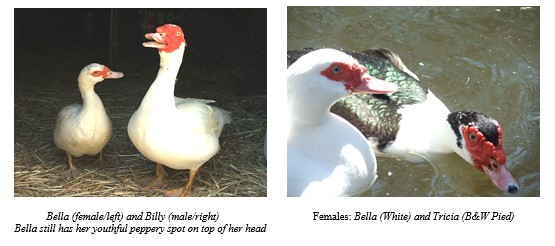
Muscovy ducks can weigh anywhere between 6-15 pounds and the lighter ones can fly; although, abandoned domestic Muscovies don't tend to go far and they don't migrate. They are plumed in a variety of fun colors including: Black, Blue, Chocolate, Lavender, Pied, Silver, White and many of these strains are Barred or Rippled. Light-colored
Muscovy ducklings have a peppery black patch on top of their heads that stay with them for most of their first year before fading away. If you see this dot, you’re looking at a youngster.
Bills are usually peach with charcoal or red highlights although they can be fully charcoal. Feet and legs are usually yellow and occasionally charcoal, sometimes with spots or highlights.
CLICK HERE to Learn More About Wild Vs. Domestic Muscovy ducks!

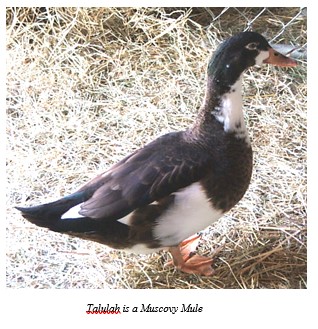
Muscovy ducks commonly intermix with other domestic ducks before being abandoned. These hybrid mixes can be plumed in just about every color in the ducky rainbow. They will often retain the familiar body shape of their Muscovy parent. The shape of their face and bill can be another indicator of their Scovy heritage.

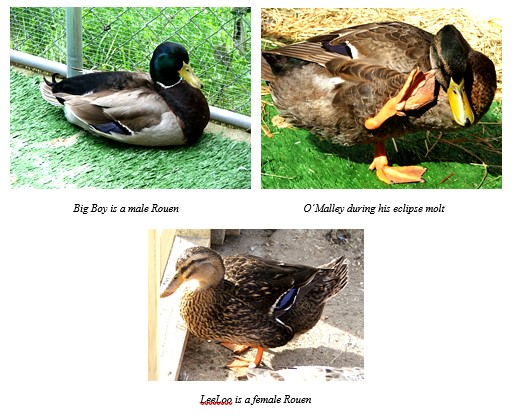
Rouen ducks may look a lot like wild Mallards, but they are distinctively larger, usually weighing between 6-8 pounds. Males eclipse molt (temporarily taking on female coloration).
Bills can be orange or olive. Legs and feet are usually orange although some will have brown highlights.

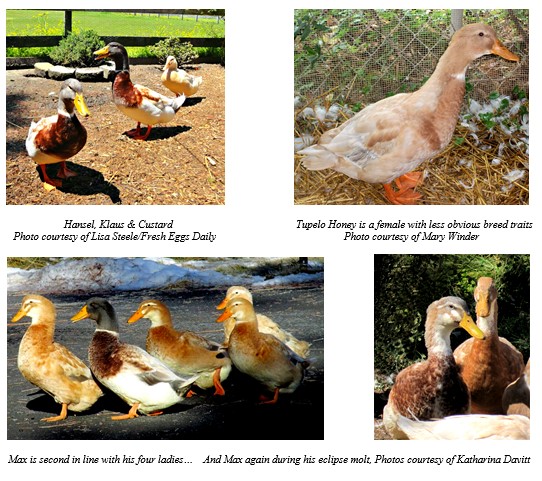
Saxony ducks are only rarely abandoned. To the untrained eye, they may look like wild Mallards at first, except that they weigh in at 8-9 pounds!
Females Saxony ducks are tan and white in color with a white streak over their eyes and a bit of gray in their wingtips. Males have white undercarriages, brown chests, gray-tipped wings, white rings around their necks and bluish-gray heads. Males eclipse molt (temporarily taking on female coloration).
Bills are usually orange, but some males may have a slight tint of olive. Legs and feet are orange.
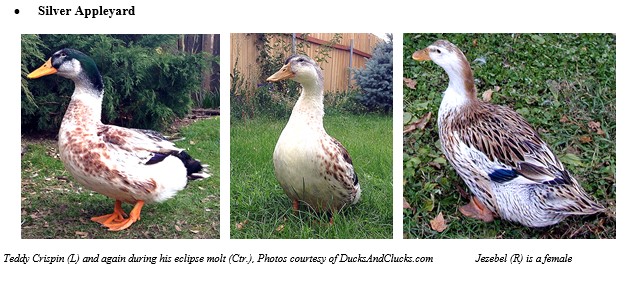
Silver Appleyard ducks weigh 8-9 pounds and are sexually dimorphic. Males appear very similar to Welsh Harlequins except that they’re larger in size. The white ring around their neck can be clear or rather indistinct. Their white undercarriage comes up and stops just below this ring on some males while on others it reaches all the way up their throats. Males also have white stripes on their face that travel over and under their eyes as well as across their cheekbones. Males eclipse molt (temporarily taking on female coloration).
Females look like giant Mallards, except that they have a lot more white in their feathers, a brown stripe down the back of their neck and a brown stripe over their eyes.
Males can have olive or orange bills while females only have orange. Legs and feet are orange, sometimes with brown highlights.
To learn more about these and other domestic duck breeds, check out The Ultimate Pet Duck Guidebook!
Every Momma Duck & Poppa Goose Should Have One (or both!)
For more thorough information on pet ducks and geese, check out The Ultimate Pet Duck Guidebook and The Ultimate Pet Goose Guidebook, which are both available in b&w and color versions on AmazonSmile. Each is over 400 pages and contains hundreds of helpful (and fun!) photos and diagrams.
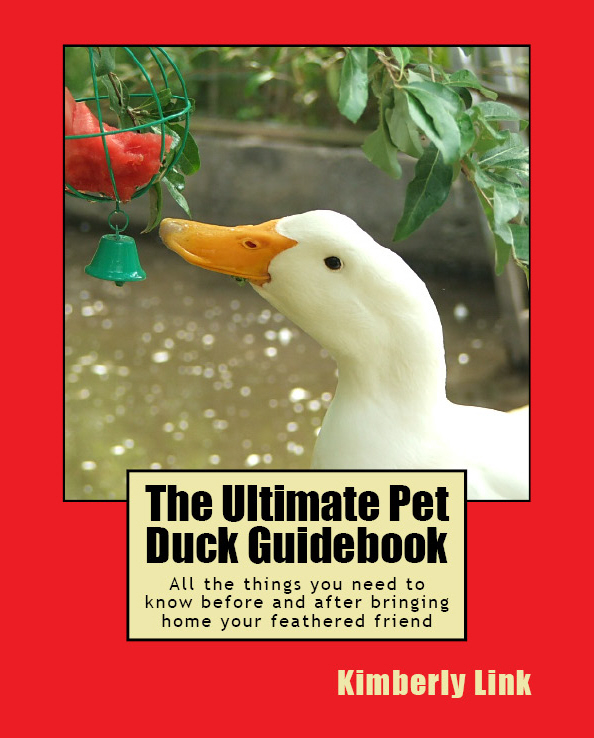 
The Ultimate Pet Duck Guidebook (b&w): $26.99
https://www.amazon.com/gp/product/1501043803/ref=ox_sc_act_title_3?smid=ATVPDKIKX0DER&psc=1
The Ultimate Pet Duck Guidebook (color): $64.99
https://www.amazon.com/Ultimate-Pet-Duck-Guidebook-feathered/dp/150034477X/ref=sr_1_1?
The Ultimate Pet Goose Guidebook (b&w): $24.99
https://www.amazon.com/gp/product/1517238951/ref=ox_sc_act_title_2?smid=ATVPDKIKX0DER&psc=1
The Ultimate Pet Goose Guidebook (color): $64.99
https://www.amazon.com/gp/product/1508497621/ref=ox_sc_act_title_1?smid=ATVPDKIKX0DER&psc=1

|

